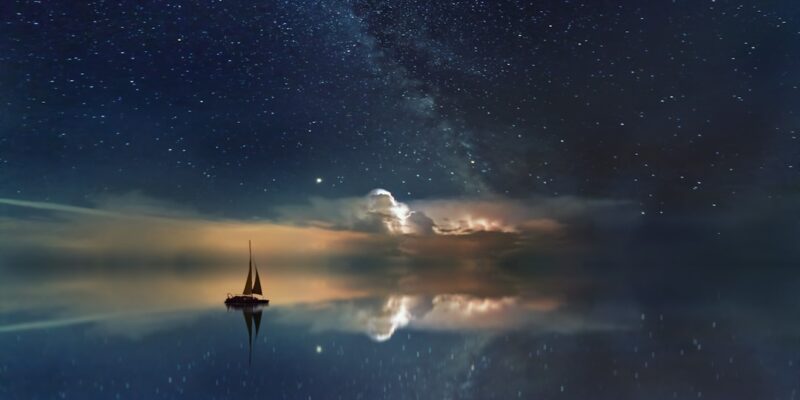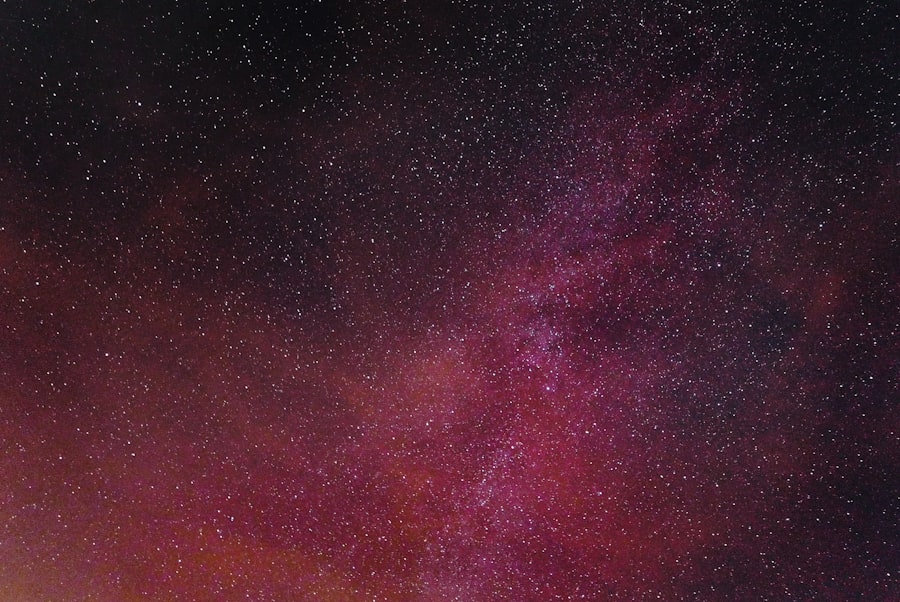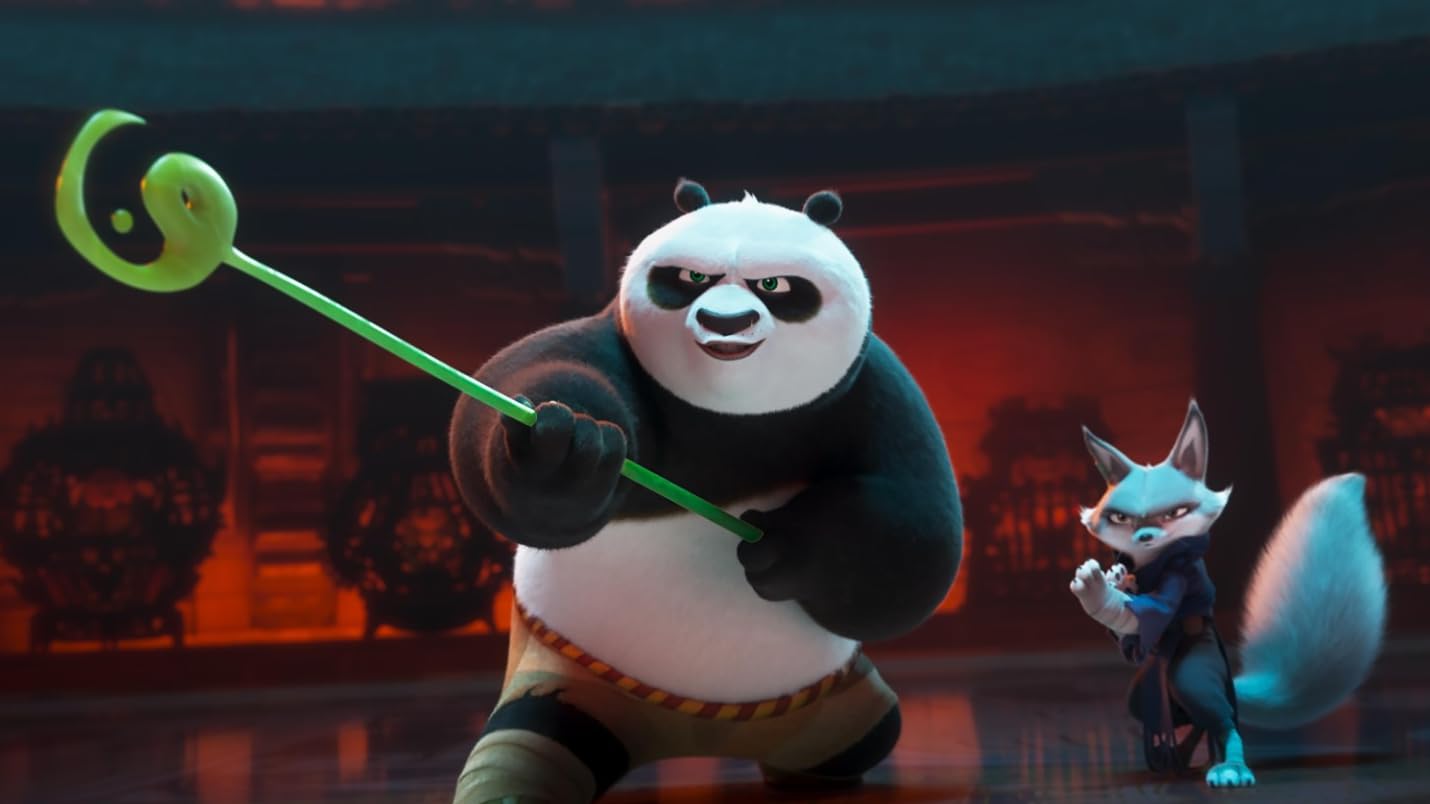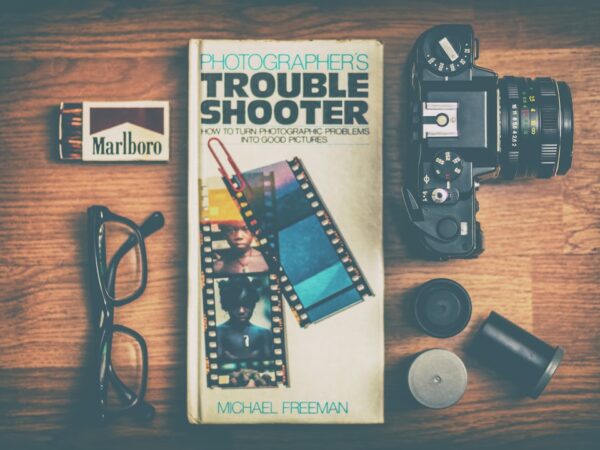
The Ultimate Guide: The Best Order to Watch Star Wars Movies
Star Wars is one of the most beloved and iconic franchises in the history of cinema. With its epic space opera storyline, memorable characters, and groundbreaking special effects, it has captured the hearts of millions of fans around the world. However, when it comes to watching Star Wars, there is an ongoing debate about the best order in which to view the films. Some argue for chronological order, while others prefer release order or even a unique viewing method known as Machete Order. In this article, we will explore the different orders in which to watch Star Wars and discuss their impact on the viewing experience.
The order in which you watch Star Wars can greatly influence your understanding and appreciation of the story. Each film builds upon the events of the previous ones, introducing new characters, plot twists, and revelations. Watching the films out of order can lead to confusion and a lack of emotional investment in the characters and their journeys. Therefore, it is important to consider the order in which you watch Star Wars to fully immerse yourself in the universe and get the most out of the storytelling.
Key Takeaways
- Watching Star Wars in order can enhance the viewing experience
- Chronological order can be confusing but provides a complete story
- Release order is the classic approach and allows for surprises
- Machete order is a fan-favorite for its unique viewing order
- The prequel trilogy is controversial but provides important backstory
Chronological Order: The Pros and Cons
One popular approach to watching Star Wars is chronological order, starting with Episode I: The Phantom Menace and ending with Episode IX: The Rise of Skywalker. This order allows viewers to experience the story as it unfolds chronologically within the Star Wars universe. By starting with the prequel trilogy, viewers are introduced to Anakin Skywalker’s journey from a young slave on Tatooine to his transformation into Darth Vader. They then move on to the original trilogy, where they witness Luke Skywalker’s journey from a farm boy on Tatooine to becoming a Jedi Knight and facing off against his father.
One advantage of watching Star Wars in chronological order is that it provides a cohesive narrative arc that follows the progression of events within the universe. It allows viewers to see the story unfold in a logical and linear manner, which can enhance their understanding and appreciation of the overall saga. Additionally, watching the prequel trilogy first can provide valuable context and background information that enriches the viewing experience of the original trilogy.
However, there are also drawbacks to watching Star Wars in chronological order. One major issue is that it spoils some of the biggest plot twists and surprises in the original trilogy. For example, if you watch the prequel trilogy first, you will already know that Darth Vader is Luke Skywalker’s father, which takes away from the impact of that revelation in Episode V: The Empire Strikes Back. Additionally, starting with the prequel trilogy may not be as engaging for viewers who are new to the franchise, as it is widely regarded as the weakest part of the saga.
Release Order: The Classic Approach
The traditional way of watching Star Wars is in release order, starting with Episode IV: A New Hope and ending with Episode IX: The Rise of Skywalker. This is how audiences originally experienced the films when they were released in theaters. Watching Star Wars in release order allows viewers to follow the story as it was intended to be seen by creator George Lucas and provides a sense of nostalgia for long-time fans.
One advantage of watching Star Wars in release order is that it allows viewers to experience the story in the same way that audiences did when the films were first released. This can be a valuable experience, as it allows viewers to understand the cultural impact and significance of each film within its historical context. Additionally, watching the original trilogy first can create a sense of mystery and intrigue around the events and characters introduced in the prequel trilogy.
However, there are also disadvantages to watching Star Wars in release order. One major drawback is that it can be confusing for viewers who are new to the franchise. The original trilogy starts in the middle of the story, with little explanation of the events and characters that came before. This can make it difficult for newcomers to fully understand and appreciate the story. Additionally, watching the prequel trilogy after the original trilogy can be jarring, as the visual effects and storytelling style are significantly different.
Machete Order: The Fan-Favorite Method
| Metrics | Values |
|---|---|
| Number of movies watched | 6 |
| Total runtime | 11 hours and 22 minutes |
| Release order | 4-5-6-1-2-3 |
| Machete order | 4-5-2-3-6 |
| Number of times watched by fans | Countless |
| Impact on Star Wars fandom | Significant |
Machete Order is a unique approach to watching Star Wars that was popularized by a blog post written by Rod Hilton in 2011. This order suggests watching the films in the following sequence: Episode IV: A New Hope, Episode V: The Empire Strikes Back, Episode II: Attack of the Clones, Episode III: Revenge of the Sith, and finally, Episode VI: Return of the Jedi. This order skips Episode I: The Phantom Menace entirely, as Hilton argues that it adds little to the overall story and can be safely omitted.
One advantage of watching Star Wars in Machete Order is that it preserves the surprise and mystery surrounding Darth Vader’s true identity. By starting with Episode IV and then jumping back to Episodes II and III, viewers are introduced to Luke Skywalker’s journey before learning about Anakin Skywalker’s fall to the dark side. This creates a sense of anticipation and suspense, as viewers are left wondering how Anakin became Darth Vader and how his story will intersect with Luke’s.
Another advantage of Machete Order is that it streamlines the viewing experience by omitting Episode
Many fans consider Episode I to be the weakest film in the saga, with its focus on politics and trade disputes rather than character development and epic battles. By skipping Episode I, viewers can avoid some of the criticisms often associated with the prequel trilogy and dive straight into the heart of the story.
However, there are also drawbacks to watching Star Wars in Machete Order. One major issue is that it disrupts the narrative flow of the prequel trilogy. By watching Episodes II and III before Episode VI, viewers may miss out on some of the emotional impact and character development that occurs in the original trilogy. Additionally, skipping Episode I means missing out on important plot points and character introductions, such as the origins of Anakin Skywalker and the introduction of Qui-Gon Jinn and Darth Maul.
The Prequel Trilogy: A Controversial Start

The prequel trilogy, consisting of Episode I: The Phantom Menace, Episode II: Attack of the Clones, and Episode III: Revenge of the Sith, was released between 1999 and 2005. It serves as a prequel to the original trilogy, exploring the rise of the Galactic Empire and the fall of Anakin Skywalker. However, the prequel trilogy has been met with mixed reviews from fans and critics alike.
One of the main criticisms of the prequel trilogy is its heavy reliance on CGI and green screen technology. Many fans felt that this detracted from the practical effects and world-building that made the original trilogy so beloved. Additionally, some fans were disappointed with the portrayal of certain characters, such as Jar Jar Binks, who was seen as annoying and unnecessary.
Despite its flaws, the prequel trilogy does have its strengths. It delves deeper into the mythology and lore of the Star Wars universe, introducing new planets, species, and political dynamics. It also provides valuable context for understanding the events of the original trilogy, such as the rise of Emperor Palpatine and the fall of Anakin Skywalker. Furthermore, it explores complex themes such as love, betrayal, and redemption, adding depth to the overall story.
The Original Trilogy: A Timeless Classic
The original trilogy, consisting of Episode IV: A New Hope, Episode V: The Empire Strikes Back, and Episode VI: Return of the Jedi, was released between 1977 and 1983. It is widely regarded as a timeless classic and a groundbreaking achievement in filmmaking. The original trilogy follows the journey of Luke Skywalker, Princess Leia, and Han Solo as they battle against the evil Galactic Empire and its enforcer, Darth Vader.
The impact of the original trilogy on pop culture cannot be overstated. It introduced iconic characters such as Luke Skywalker, Darth Vader, and Yoda, who have become cultural icons and household names. The original trilogy also revolutionized special effects in cinema, with its groundbreaking use of models, miniatures, and practical effects. It set the standard for what a blockbuster film could be and inspired generations of filmmakers and storytellers.
The original trilogy is also known for its compelling characters and themes. It explores timeless themes such as good versus evil, redemption, and the power of hope. The characters are relatable and well-developed, with each having their own unique journey and arc. From Luke Skywalker’s hero’s journey to Han Solo’s transformation from a selfish smuggler to a selfless hero, the original trilogy provides a rich tapestry of storytelling that continues to resonate with audiences today.
The Sequel Trilogy: A Modern Take on Star Wars
The sequel trilogy, consisting of Episode VII: The Force Awakens, Episode VIII: The Last Jedi, and Episode IX: The Rise of Skywalker, was released between 2015 and 2019. It takes place several decades after the events of the original trilogy and introduces a new generation of characters, including Rey, Finn, and Kylo Ren.
The reception of the sequel trilogy among fans has been mixed. Some fans praised the films for their visual effects, action sequences, and performances by the cast. Others criticized them for their perceived lack of originality and coherence in storytelling. One major point of contention was the handling of certain characters and plotlines, such as Rey’s parentage and the redemption arc of Kylo Ren.
Despite the mixed reception, the sequel trilogy does have its merits. It introduces new characters and storylines that expand the Star Wars universe and provide fresh perspectives on the ongoing conflict between the light and dark sides of the Force. It also explores complex themes such as identity, legacy, and the cyclical nature of history. Furthermore, it pays homage to the original trilogy by bringing back beloved characters such as Luke Skywalker, Princess Leia, and Han Solo.
The Spin-Offs: Stories Beyond the Main Saga
In addition to the main saga films, there have been several spin-off films that explore side characters and events within the Star Wars universe. These spin-offs include Rogue One: A Star Wars Story and Solo: A Star Wars Story.
Rogue One: A Star Wars Story is set just before the events of Episode IV: A New Hope and follows a group of rebels who embark on a mission to steal the plans for the Death Star. It provides valuable context for understanding the events of the original trilogy and explores themes such as sacrifice, heroism, and the power of ordinary people to make a difference.
Solo: A Star Wars Story is a standalone film that focuses on the early years of Han Solo, one of the most beloved characters in the Star Wars universe. It explores his origins as a smuggler and his friendship with Chewbacca, as well as his encounters with Lando Calrissian and other iconic characters. Solo provides fans with a deeper understanding of Han Solo’s backstory and adds depth to his character.
The spin-off films are significant in expanding the Star Wars universe and providing fans with new stories and perspectives. They allow for a deeper exploration of side characters and events that may not have been fully developed in the main saga films. Additionally, they provide opportunities for new filmmakers to put their own spin on the Star Wars franchise and bring fresh ideas to the table.
The TV Series: A Deeper Dive into Star Wars Lore
In recent years, Star Wars has expanded beyond the big screen and into the realm of television with the release of several TV series. These series include Star Wars: The Clone Wars, Star Wars Rebels, and The Mandalorian.
Star Wars: The Clone Wars is an animated series that takes place between Episode II: Attack of the Clones and Episode III: Revenge of the Sith. It explores the events of the Clone Wars and provides valuable context for understanding the prequel trilogy. The series delves deeper into the characters and conflicts introduced in the films, adding depth and complexity to the overall story.
Star Wars Rebels is another animated series that takes place between Episode III: Revenge of the Sith and Episode IV: A New Hope. It follows a group of rebels as they fight against the Galactic Empire and its enforcer, Darth Vader. The series introduces new characters and storylines that expand the Star Wars universe and provide fresh perspectives on the ongoing conflict.
The Mandalorian is a live-action series that takes place after the events of Episode VI: Return of the Jedi. It follows the adventures of a lone bounty hunter in the outer reaches of the galaxy. The Mandalorian has been praised for its storytelling, visual effects, and performances, particularly that of Pedro Pascal as the titular character. It has also introduced new characters such as Baby Yoda, who quickly became a pop culture phenomenon.
The TV series are important in understanding the Star Wars universe and exploring new stories and characters. They provide a deeper dive into the lore and mythology of Star Wars, allowing fans to explore different corners of the galaxy and learn more about their favorite characters. Additionally, they offer opportunities for new storytelling techniques and formats that may not be possible in a feature film.
Finding Your Perfect Order to Watch Star Wars
In conclusion, watching Star Wars in the correct order is crucial for fully immersing yourself in the universe and getting the most out of the storytelling. Whether you choose to watch in chronological order, release order, or Machete Order, each approach has its own advantages and disadvantages. Chronological order provides a cohesive narrative arc and valuable context, but it spoils some of the biggest plot twists. Release order allows you to experience the story as it was originally intended, but it can be confusing for newcomers. Machete Order preserves the surprise and mystery surrounding Darth Vader’s true identity, but it disrupts the narrative flow of the prequel trilogy.
Ultimately, the order in which you watch Star Wars is a personal choice that depends on your preferences and familiarity with the franchise. If you are new to Star Wars, watching in release order may be the best option to fully understand and appreciate the story. If you are a long-time fan looking for a fresh perspective, Machete Order may provide a unique viewing experience. Whichever order you choose, remember to sit back, relax, and enjoy the epic journey through a galaxy far, far away. May the Force be with you!
FAQs
What is the best order to watch Star Wars?
The best order to watch Star Wars is a matter of personal preference, but many fans recommend watching the movies in chronological order, starting with Episode I: The Phantom Menace and ending with Episode IX: The Rise of Skywalker.
What is the chronological order of the Star Wars movies?
The chronological order of the Star Wars movies is as follows: Episode I: The Phantom Menace, Episode II: Attack of the Clones, Episode III: Revenge of the Sith, Solo: A Star Wars Story, Rogue One: A Star Wars Story, Episode IV: A New Hope, Episode V: The Empire Strikes Back, Episode VI: Return of the Jedi, Episode VII: The Force Awakens, Episode VIII: The Last Jedi, and Episode IX: The Rise of Skywalker.
What is the release order of the Star Wars movies?
The release order of the Star Wars movies is as follows: Episode IV: A New Hope (1977), Episode V: The Empire Strikes Back (1980), Episode VI: Return of the Jedi (1983), Episode I: The Phantom Menace (1999), Episode II: Attack of the Clones (2002), Episode III: Revenge of the Sith (2005), Episode VII: The Force Awakens (2015), Rogue One: A Star Wars Story (2016), Episode VIII: The Last Jedi (2017), Solo: A Star Wars Story (2018), and Episode IX: The Rise of Skywalker (2019).
What is the Machete Order for watching Star Wars?
The Machete Order for watching Star Wars is a viewing order that was popularized by blogger Rod Hilton. It involves watching the movies in the following order: Episode IV, Episode V, Episode II, Episode III, Episode VI, and skipping Episode I altogether. This order is meant to preserve the surprise reveal of Darth Vader as Luke Skywalker’s father in Episode V, while also providing context for Anakin Skywalker’s fall to the dark side in Episodes II and III.
What is the chronological order of the Star Wars TV shows?
The chronological order of the Star Wars TV shows is as follows: Star Wars: The Clone Wars (2008-2020), Star Wars Rebels (2014-2018), Star Wars Resistance (2018-2020), The Mandalorian (2019-present), and Star Wars: The Bad Batch (2021-present).

















